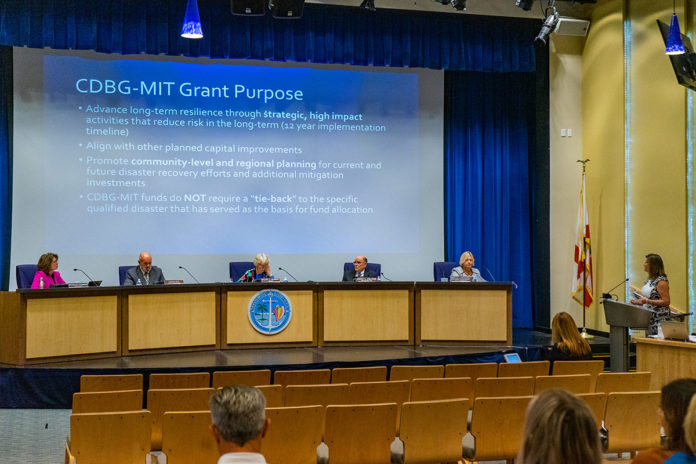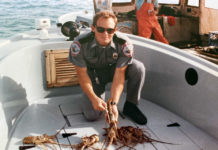
Hurricane Irma hit South Florida over two years ago, but fixes and funding have been slow to come to the Keys. A new federal grant opportunity, however, could change that.
A total of $774 million in federal Community Development Block Grant money was allocated to Florida for disaster recovery (CDBG-DR) after Irma. Monroe County’s set-aside has funded programs like Rebuild Florida’s workforce housing, housing repair and replacement, and voluntary home buyout programs.
Helene Wetherington, the local disaster recovery director for Monroe County, discussed the ineffectiveness of these programs at the Sept. 18 Board of County Commissioners meeting. “They’ve all been funded under CDBG-DR, but we’re waiting to see how they come to fruition. And, unfortunately, they haven’t yet,” she said.
Wetherington presented to county commissioners not to deride the current recovery funding, but rather to ask for their help in directing a brand new line of federal funding. Unlike CDBG-DR funding, Community Development Block Grant Mitigation (CDBG-MIT) funds don’t have to tie directly back to Irma. “We just have to show a relationship between the projects and building resilience for future disasters against hurricanes and sea level rise,” said Wetherington. “So, we can look much broader and fund more, important mitigation projects.”
So how much money might we see and what fixes might get done? There’s $633 million in CDBG-MIT funding available to Florida, and the state has yet to determine its plan for allocation. “It’s still up in the air. That’s why we’re here,” said Wetherington.
Wetherington and her colleague, Julie Dennis of Ovid Solutions, hope to leverage the lack of a state action plan to get a win for Monroe County. Calling on each commissioner to fill out project prioritization cards before the October BOCC meeting, Dennis asked them for their “black laundry list” of desired resilience-building and mitigation projects.
Dennis described this “homework” as an opportunity to influence how much of the mitigation funding will get to the Keys and for which types of projects. Accepting her “assignment,” Commissioner Heather Carruthers agreed: “I think we’re in a position to determine whether it’s more important to preserve a historic building or elevate roads as a high and medium priority.”
Wetherington will use that guidance to report directly to the Florida Department of Economic Opportunity. “As the DEO is developing their action plan for this funding, it’s important for them to remember Monroe is still the most impacted and distressed county from Hurricane Irma,” she said. “So our needs should be fully integrated into this plan.”
Projects could include programs like protecting critical facilities and residential drainage systems, elevating roads, stimulating economic development and building up wind resistance. They will also recommend a direct set-aside for Monroe County under the new grant to prevent having to compete against other bigger, but less-affected counties like Miami-Dade and Broward for critical funds.


























